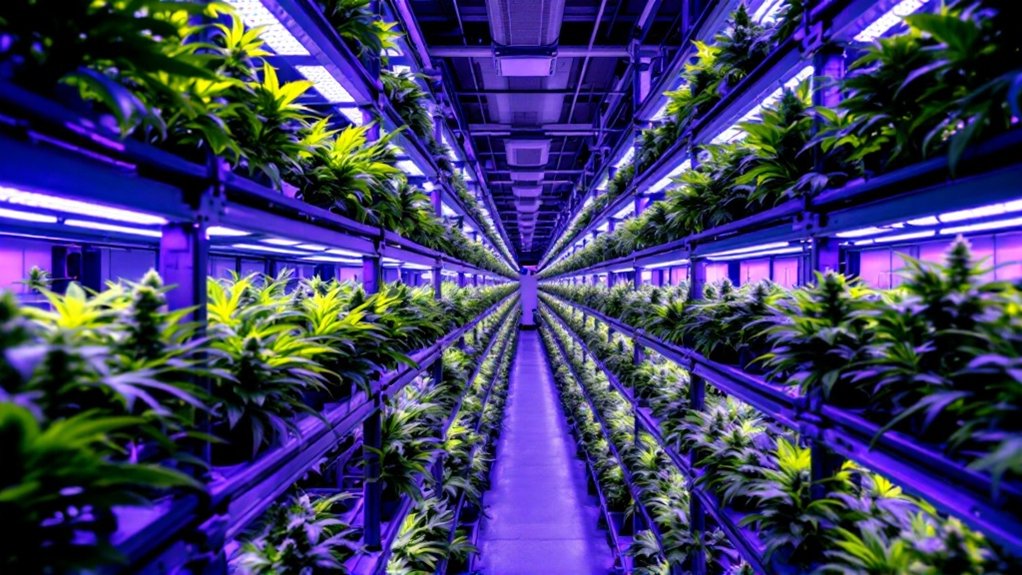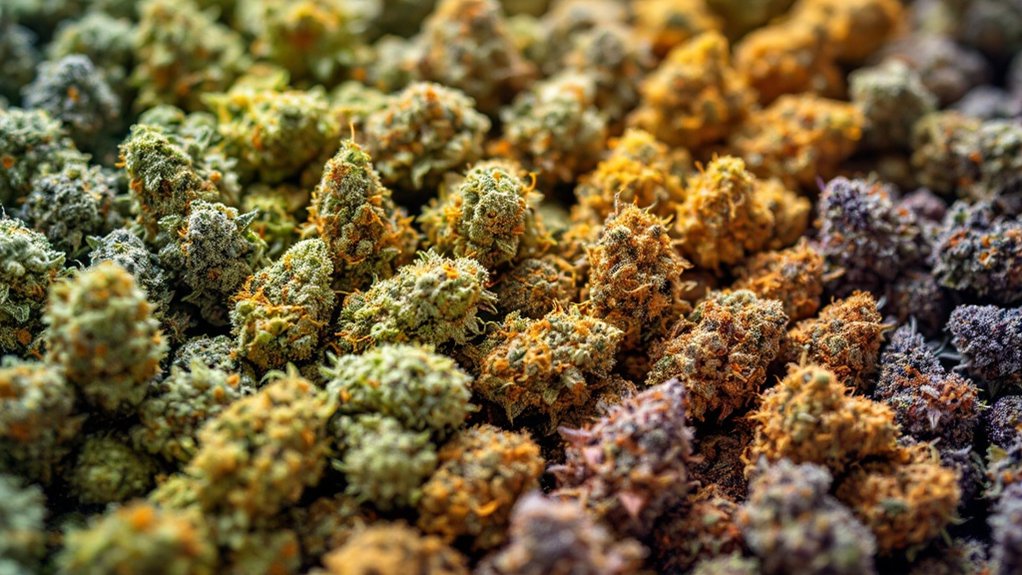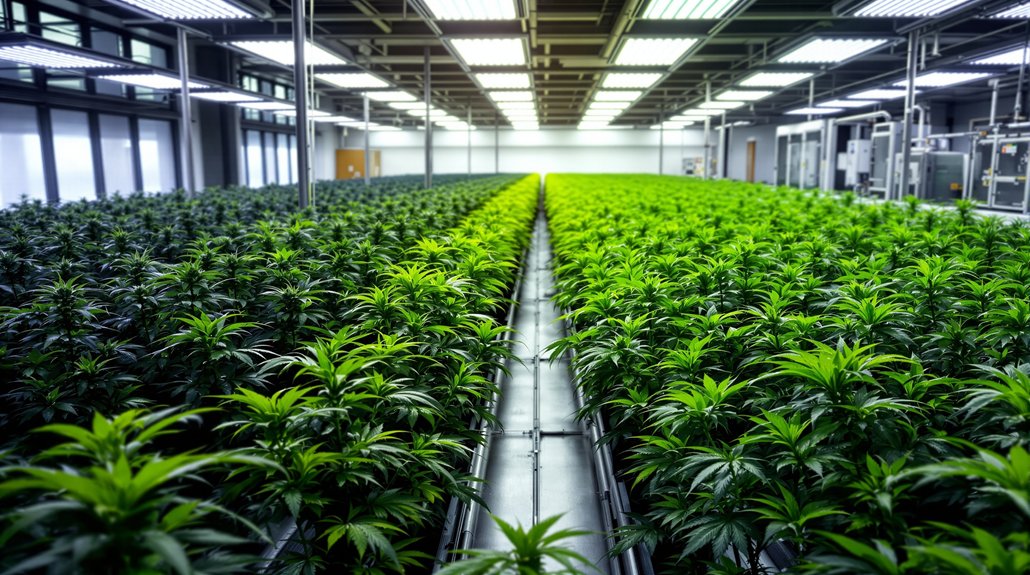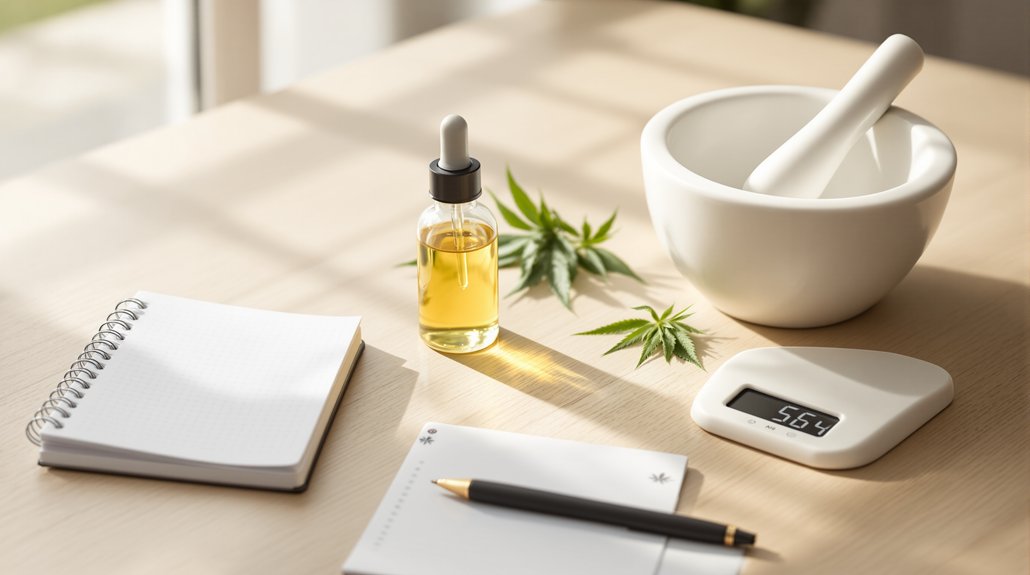Commercial cannabis cultivation has gone high-tech. Vertical racking systems now triple yields per square foot, while specialized rooms handle each growth stage from mother plants to flowering. Modern HVAC keeps perfect conditions year-round. LEDs have kicked old HIDs to the curb, saving energy while boosting plant health. Quality control isn’t optional anymore; it’s make-or-break for profits. These aren’t your hippie uncle’s basement grow operations, folks. The green revolution continues beyond the plants themselves.
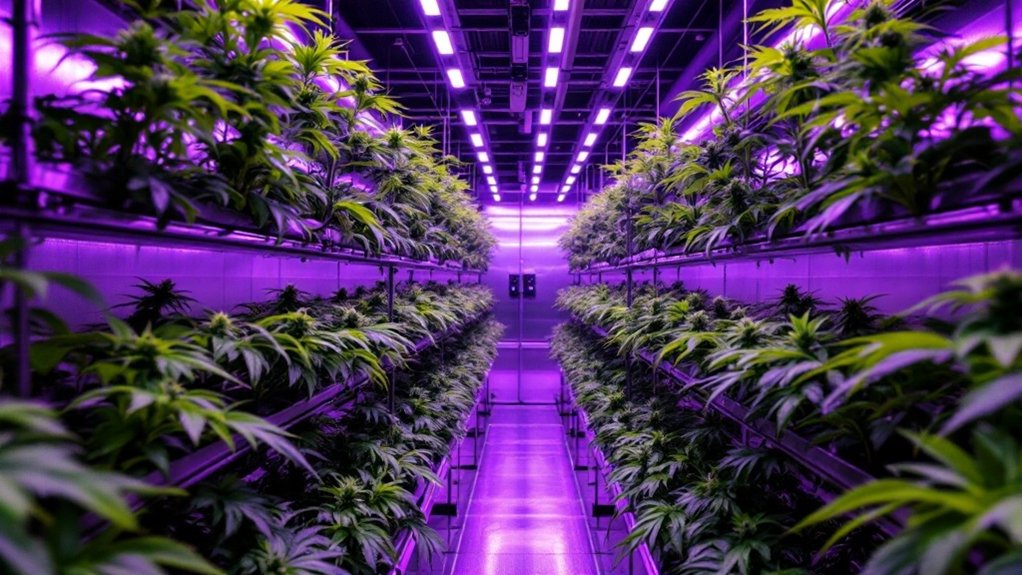
How exactly do commercial cannabis cultivators maximize their profits while minimizing their footprint? Simple. They build up, not out. Vertical racking systems have revolutionized the industry, allowing growers to stack plants in multiple tiers. This isn’t just clever use of space, it’s money in the bank. These systems can yield two to three times more product per square foot than traditional setups. Yeah, the upfront costs are hefty, but do the math. More plants, more profit.
Commercial facilities aren’t just warehouses with plants. They’re sophisticated operations with distinct, purpose-built environments. Mother rooms house the genetic goldmines – large, stable plants that provide cuttings for future crops. Clone rooms nurture these cuttings into viable plants. Veg rooms help plants bulk up. Flower rooms? That’s where the magic happens, where plants produce the valuable buds that end up on dispensary shelves. Each room type serves a specific function in the production pipeline. Understanding the three growth stages of cannabis is essential for optimizing each dedicated growing environment.
Temperature, humidity, airflow. Get these wrong and your million-dollar investment turns into compost. Modern HVAC systems maintain the Goldilocks zone – not too hot, not too cold, humidity just right, essentially creating summer in Minnesota in January. Year-round growing means year-round revenue. Smart growers use sensors and automation to monitor conditions constantly. No surprises, no crop failures. Proper CO2 delivery systems significantly impact plant growth rates and overall yield quality in vertical setups.
Lighting has evolved too. LEDs are dominating the market, especially in vertical setups. They run cooler, use less electricity, and let growers manipulate light spectrum. Old-school HIDs? Dinosaurs heading for extinction. Many cultivators now implement tissue culture propagation techniques to maintain genetic consistency and reduce costs when operating at scale.
The best cannabis operations run like well-oiled machines. Standardized processes. Precise nutrient delivery. Aggressive pest management protocols. It’s agriculture meets pharmaceutical manufacturing. And in this business, consistency equals cash.
Commercial cannabis cultivation isn’t for amateurs or the faint of heart. It’s a high-stakes game where science, technology, and agricultural know-how converge. Not everyone will win.
Frequently Asked Questions
What Licenses Are Required to Start a Commercial Cannabis Operation?
Starting a commercial cannabis operation requires multiple licenses. No shortcuts here.
Federal EIN, state-specific permits from agencies like Oregon’s Department of Agriculture for hemp or OLCC for marijuana producers, and local business licenses are all mandatory.
Don’t forget city-specific permits like Portland’s Marijuana Regulatory License.
You’ll need building permits, security system documentation, and proof of property ownership too.
The fees? Substantial and nonrefundable.
Cannabis bureaucracy at its finest.
How Much Electricity Does a Large-Scale Grow Operation Consume?
Large-scale cannabis operations are power-hungry beasts, consuming electricity equivalent to hospitals or data centers.
They require a staggering 2,000-3,000 kWh per pound produced. Nationally, cannabis growing accounts for about 1% of U.S. electricity use. Shocking, right?
Lighting systems devour the most juice, followed by HVAC and dehumidification at roughly 33%. The energy bill? A hefty 20-40% of total production costs. Not exactly environmentally friendly.
What Insurance Options Exist for Commercial Cannabis Growers?
Commercial cannabis growers have multiple insurance options tailored to their unique risks.
General liability covers third-party injuries and product liability claims.
Property and crop insurance? Essential for protecting those pricey plants from fire, theft, and disasters.
Specialized coverage includes equipment breakdown insurance—because when your climate control fails, your profits go up in smoke.
Workers’ comp is mandatory for employee injuries.
Most carriers cap policies at $10M per occurrence.
Legal compliance is non-negotiable.
How Do Cannabis Businesses Handle Banking and Financial Services?
Most cannabis businesses operate cash-only.
Banks fear federal repercussions, cannabis is still illegal nationally, remember? Some brave financial institutions serve the industry, filing suspicious activity reports to stay compliant.
The SAFER Banking Act could change everything. Progress? Maybe.
Meanwhile, dispensaries have literal vaults of cash. Armed guards. Armored cars.
It’s 2025 and they’re handling finances like it’s prohibition-era. Ridiculous, but true.
Are Cannabis Cultivation Workers Eligible for Agricultural Labor Protections?
Cannabis cultivation workers face a legal maze regarding labor protections. The NLRB typically classifies them as agricultural laborers, exempting them from federal unionization rights. Tough luck for them.
A 2021 memo cemented this stance, especially for workers performing “primary” tasks like harvesting and pruning.
But there’s hope elsewhere. State labor boards might still offer protections where federal law falls short. Pennsylvania, for instance, could extend coverage based on mushroom industry precedent.
